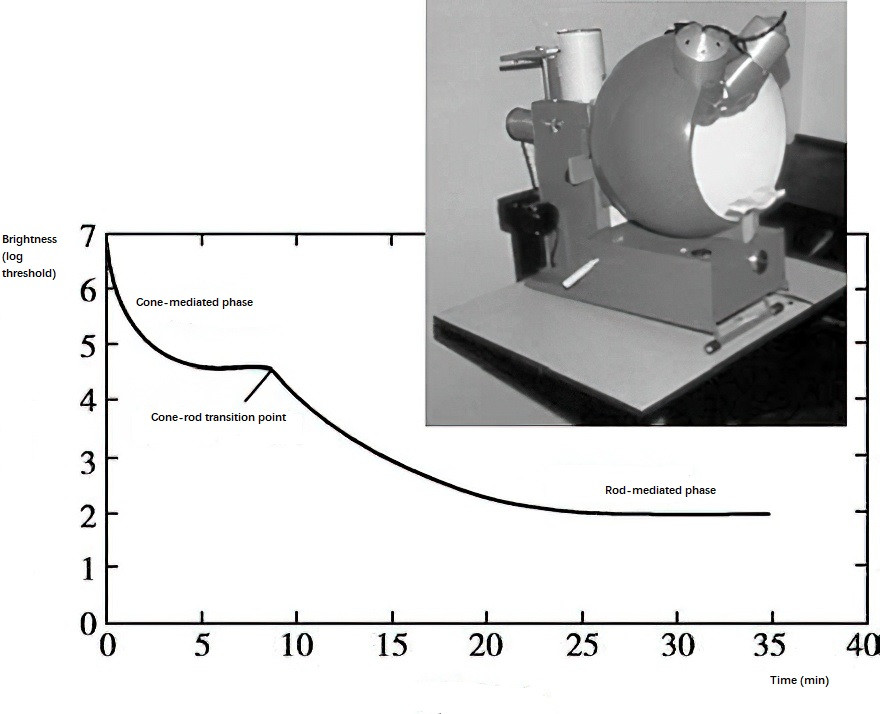When the human eye transitions from a well-lit environment to darkness, it initially perceives nothing but gradually becomes capable of discerning objects in the surroundings as sensitivity to light increases and eventually reaches an optimal state. This process is known as dark adaptation. In contrast, when a person moves from darkness to a brightly lit environment after a prolonged period, there is an initial sensation of overwhelming brightness where visual perception of objects is obstructed. Over a brief period, normal visual perception is restored. This process, termed light adaptation or photopic vision, corresponds to the resynthesis of photopigments in cone cells. In individuals with normal vision, the process of light adaptation typically takes about one minute, reflecting the functional status of cone cells.
Dark adaptation testing assesses the sensitivity of scotopic vision and provides a quantitative evaluation of night blindness. In individuals with normal vision, light sensitivity significantly improves in the first 5 minutes of dark adaptation, then increases more gradually. Between 8 and 15 minutes, the rate of improvement accelerates again, slowing down afterward until reaching a stable peak at around 50 minutes. At approximately 5 to 8 minutes, a turning point, known as the Kohlrausch bend, can be observed on the dark adaptation curve. This point represents the conclusion of cone-mediated dark adaptation, after which the process is entirely dependent on rod cells. The first phase of dark adaptation is primarily related to the synthesis of photopigments in cone cells, while the second phase, which constitutes the main phase of dark adaptation, is associated with the enhanced synthesis of rhodopsin in rod cells.
Methods for examining dark adaptation include:
Comparison Method
The examinee and an observer with normal dark adaptation both enter a darkroom. The time taken by each individual to discern objects within the darkroom is recorded. A significantly extended time for the examinee indicates a deficiency in dark adaptation.
Dark Adaptometer Testing
Common devices for this examination include the Goldmann-Weekers Adaptometer, the Hartinger Adaptometer, and the Friedmann Adaptometer. These devices typically consist of an adjustable light intensity illumination system and a recording mechanism. Testing often begins with 5–15 minutes of light adaptation, followed by 30 minutes of dark adaptation measurement. Connecting the recorded data points generates a dark adaptation curve.

Figure 1 Dark adaptation curve from a Goldmann-Weekers adaptometer